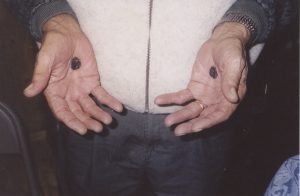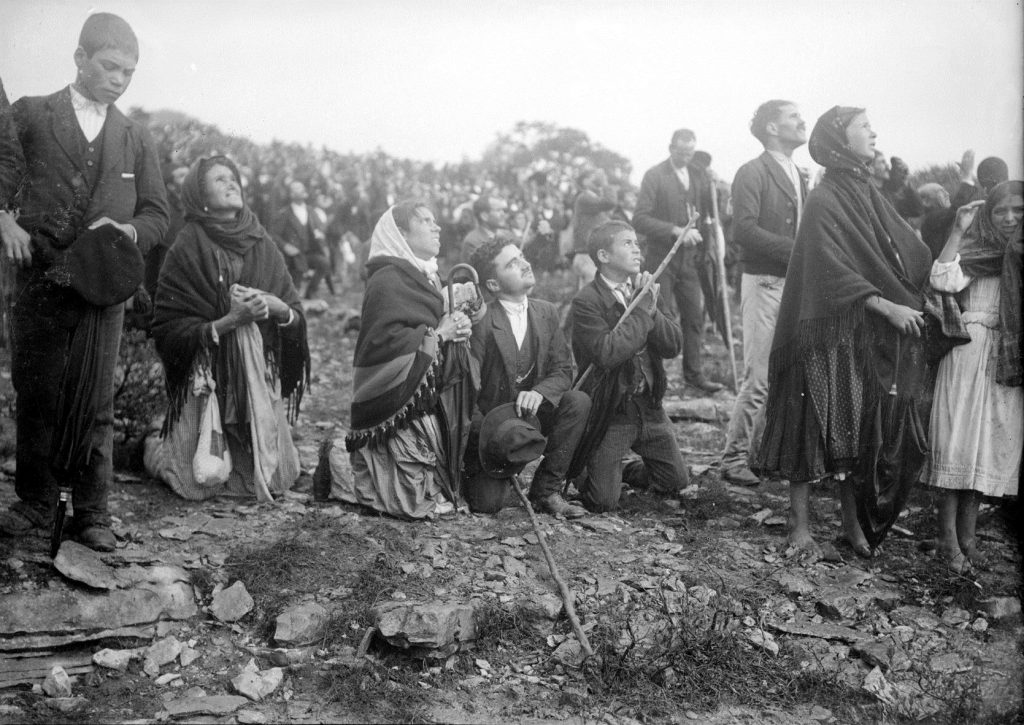“Miracles are not the centrality of our faith, but they can certainly get us excited. They can bolster our faith when we have doubts, and they can bring people into the Church who are curious about what we believe.”
Michael O’Neill is “the miracle hunter.” He seeks them out, analyzing where the Church is in the determination process, tracking alleged sightings of Mary and visions of the saints. Although true miracles are few and far between, they “draw us close to Christ,” O’Neill says, and they play an important role in our faith. His book, “Exploring the Miraculous” (Our Sunday Visitor, $14), grew from a decadeslong quest to track miracles happening around the world.
Kris McGregor: How did you get the name “miracle hunter”?
Michael O’Neill: The Vatican doesn’t have a section on its site that tracks miracles, or the approvals of bishops. So I built the website, miraclehunter.com, and started tracking. All these years later, the name stuck. It’s a fun way for people to get interested in what I do.
McGregor: I imagine you’ve encountered many, many instances that are maybe not so miraculous?
O’Neill: People might assume the miracle hunter is a miracle promoter. But the vast majority of things claimed are not miracles. It’s only a very few, rare instances. Even the term “miracle” implies that it’s rare. There are many things out there that are hoaxes, or have natural causes. There’s things we don’t have an explanation for with our current understanding of science.
McGregor: You map out the trends and claims of the miraculous. How did claims of apparitions become so popular?
O’Neill: The Church established the rules for investigating miracles and apparitions at the Council of Trent in 1545. I started there, and it’s consistent over the centuries; then, all of a sudden, 1980 hits and we see a veritable explosion of claims of miracles and apparitions around the world.
I don’t have a definitive answer. But a couple of things may have contributed to this. In 1966, the Church changed its rules about private revelations. You no longer had to get approval from your local bishop if you wanted to write about them.
You also have end-times fanaticism. As 2000 approached, people were very worried about what was going to happen with the world. You see an increase of activity related to the predictions and prophecies.
And then there’s Medjugorje, which started in 1981. When I looked at the number of claims happening after 1981, the people who made these claims about the Virgin Mary had ties to Medjugorje. So there’s perhaps a bit of mimicry phenomena, too.
McGregor: So it’s imperative that we go to the Church and trust its discernment here.
O’Neill: The important thing to remember is that, especially in our modern times, the Church is really looking out for the faithful. They’re not looking to gain new members by miracles, they’re not trying to sell trinkets at shrines. The Church has our best interest in mind, and if it’s something worthy of belief, we can engage with it.
Another important point is that even if the Church were to say a certain apparition were true, we don’t have to engage with it at all. We can acknowledge that the Church has said this, but we don’t have to incorporate it into our own life of faith.
McGregor: Has modern medicine made it harder to determine whether miracles occur because of the intercession of a saint?
O’Neill: I like to joke that it’s a miracle they find any miracles at all for these canonization causes, because the criteria is so strict! The Church uses the Lambertini Criteria, named for Cardinal Prospero Lambertini. When he became Pope Benedict XIV, he established these rules: The healing has to be permanent, complete, and lasting. It has to be a serious matter, and can’t have any medical intervention.

McGregor: I think for anyone who begins to explore the miraculous, things like incorruptibles really capture the imagination. How do you approach these things without skepticism?
O’Neill: Incorruptibles are some of the most fascinating things. We have the bodies of some of the great saints that have not suffered the ravages of time, they haven’t decayed in a way that we would expect. Their bodies remain intact.
With all these things, God still asks us to bring a little bit of faith to the table. A lot of these preservations aren’t exactly perfect, or they don’t last forever. I think there’s been some cases of saints who have been incorruptible for 800 years, and they’ve checked on them year by year by year, and at some point, they decompose. We don’t know the way God has set up the system, but it’s something miraculous.
McGregor: What’s your favorite type of miracle?
O’Neill: I love eucharistic miracles because science can validate them. It’s one of those things that really shines the light on this central piece of our faith: the Eucharist.
We have cases where a host is found discarded, and then the priest takes it back and reserves it, and over time, some red or fleshy substance appears on it. They often send these to atheistic scientists, who would have no interest in finding this. They don’t tell them what it is when they send it. And then they find, often, heart muscle, of the type AB; this seems to be the most common thing that I’ve seen. They show that it’s human tissue.
It’s absolutely incredible. For those people who doubt whether our Eucharist is the true body and blood, soul and divinity of Christ, this is a huge boost.

